Giresun is one of the unique cities of the Black Sea region where green and blue embrace each other. With its natural beauty, historical texture, and cultural heritage, it attracts both local and foreign tourists. Thanks to its rich sightseeing spots ranging from historical castles to highlands, from unique coastal stretches to natural wonder lakes, Giresun offers a route worth exploring.
The city particularly stands out in the summer months with its highland festivals and nature tourism. Historical and symbolic spots such as Giresun Castle, Zeytinlik District, and Giresun Island are places that can be easily visited in the city center. In addition, natural areas like Mavi Lake, Kuzalan Waterfall, and Karagöl Plateau are must-see stops for nature lovers. This diversity of Giresun offers visitors a peaceful atmosphere as well as a holiday full of discovery.
1. Giresun Castle – Estimated to have been built in the 2nd century BC; features inner and outer structures, the tomb of Topal Osman Ağa, and panoramic views of the Black Sea.
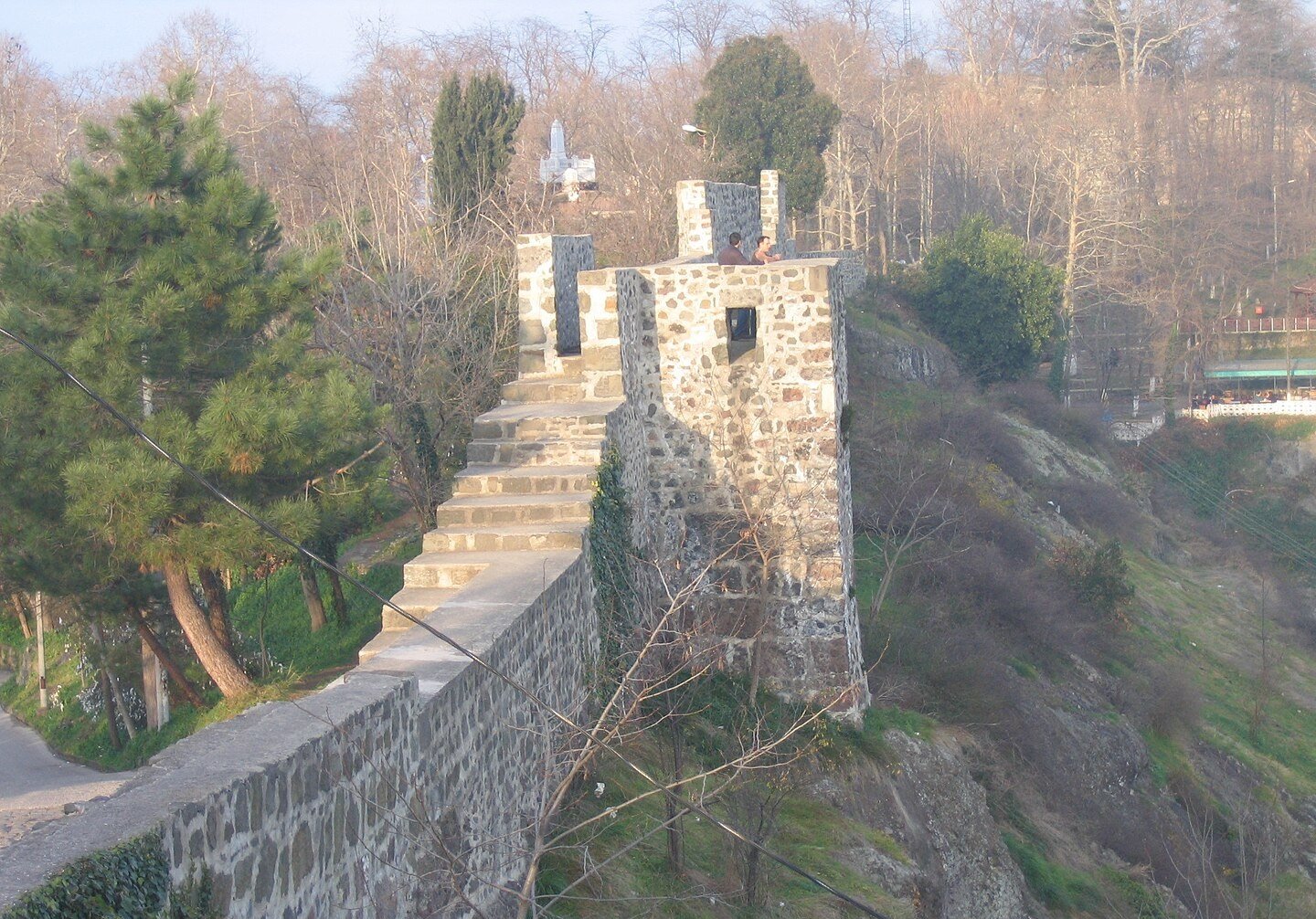
Giresun Castle is a historical structure located on a hill dominating the sea in the city center and has become a symbol of Giresun. It is estimated to have been built in the 2nd century BC by Pharnaces I, King of Pontus. The castle has been used by various civilizations throughout history and has managed to survive to the present day. Notable for its inner and outer walls, the castle is not only a defensive structure but also an important architectural heritage.
One of the most remarkable features inside the castle is the tomb of Topal Osman Ağa, a national resistance hero from Giresun. This tomb holds spiritual significance for both locals and visitors. Those who climb to the castle are greeted with a panoramic view stretching out to the vast waters of the Black Sea. Especially at sunset, Giresun Castle offers a unique viewing experience and is one of the essential stops on a trip to Giresun, with its historical atmosphere and natural beauty.
2. Giresun Museum (Gogora Church) – Museum card accepted, features archaeological and ethnographic collections.
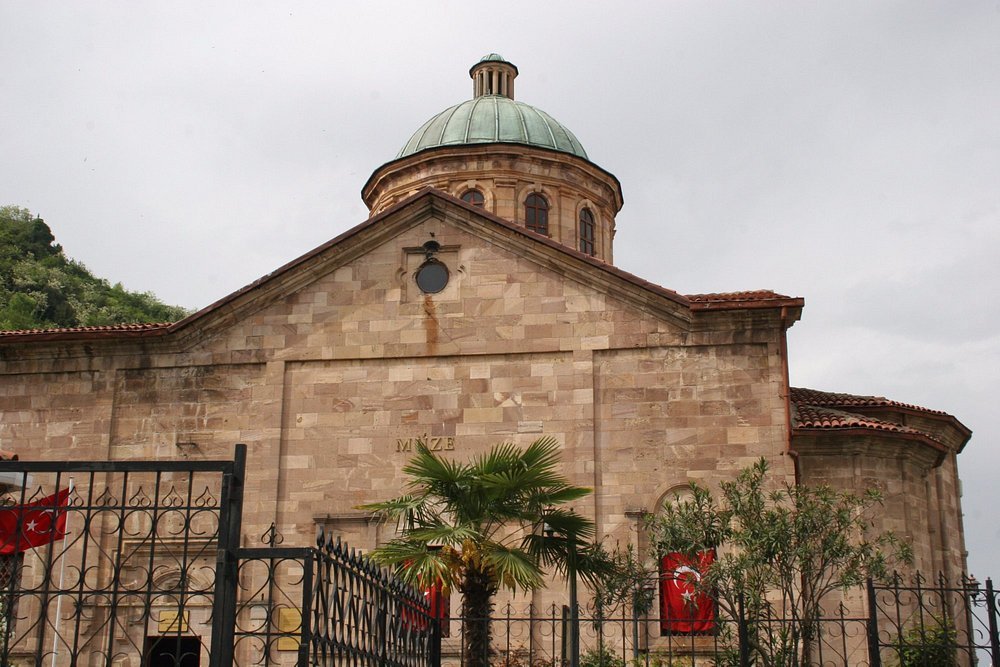
Giresun Museum is located in a Greek Orthodox basilica building from the 18th century, known today as Gogora Church. Built by the local Greek community between 1850–1860, this structure was used for worship until 1923. After remaining vacant for many years, it served as a prison between 1948 and 1967. Undergoing a comprehensive restoration between 1982 and 1988, the building was reopened to the public in 1988 as an archaeology and ethnography museum.
The museum collections contain a rich variety of items gathered from the region and transferred from other museums. In the archaeological section, terracotta figurines, vessels, amphorae, and coins dating back to 3000 BC are displayed, covering periods from the Early Bronze Age to the Byzantine era. The ethnographic section features 19th-century clothing, kitchen and bath utensils, weapons, jewelry, and textiles. Occasionally, special exhibitions are also held, focusing on national resistance heroes like Topal Osman Ağa.
3. Zeytinlik District (Gogora District) – A nostalgic neighborhood with wooden Greek-Turkish houses, designated as a 3rd-degree protected site.
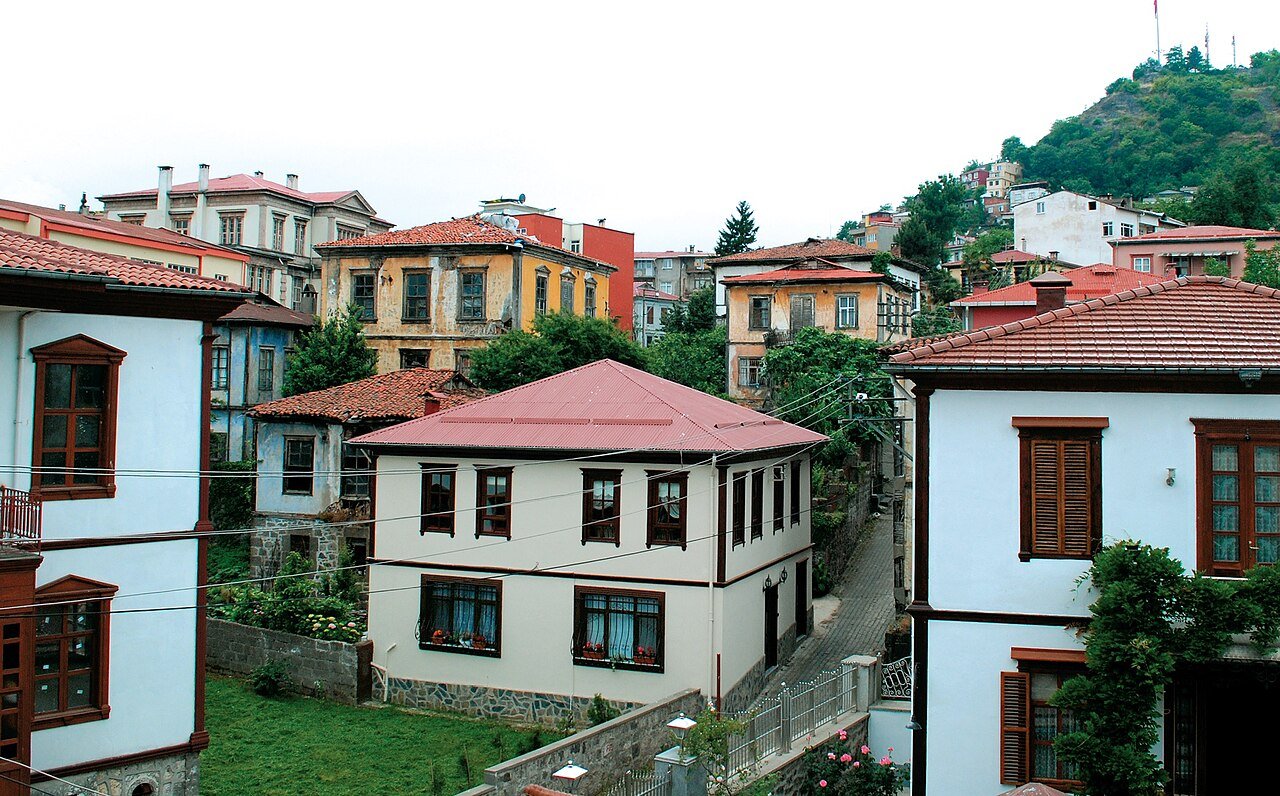
Zeytinlik District, also known as Gogora District, is a unique settlement located in the historical center of Giresun and is protected as a 3rd-degree urban conservation area. Built approximately two centuries ago using imported materials such as Marseille tiles from Europe and Russian stoves, the houses reflect the shared living environment of the Greek and Turkish residents of the time. Today, the district contains about 80 registered buildings, which stand out architecturally with their garden layouts, wrought iron gates, and precisely positioned bay windows.
This area is situated on the eastern slope of Giresun Castle, and the houses are arranged in a way that does not block each other’s light, view, or air circulation. Elements such as narrow stone streets, courtyard gardens, and balcony façades can be seen in these homes, whose architectural layout reflects the principles of the golden ratio. Registered in 1991, Zeytinlik District saw the restoration of about 40 historical houses between 2018 and 2020, preserving their original texture. Efforts are also ongoing to include the area in the UNESCO World Heritage Tentative List.
4. Kapu Mosque – Dating back to the 16th century, preserved as a cultural heritage site.
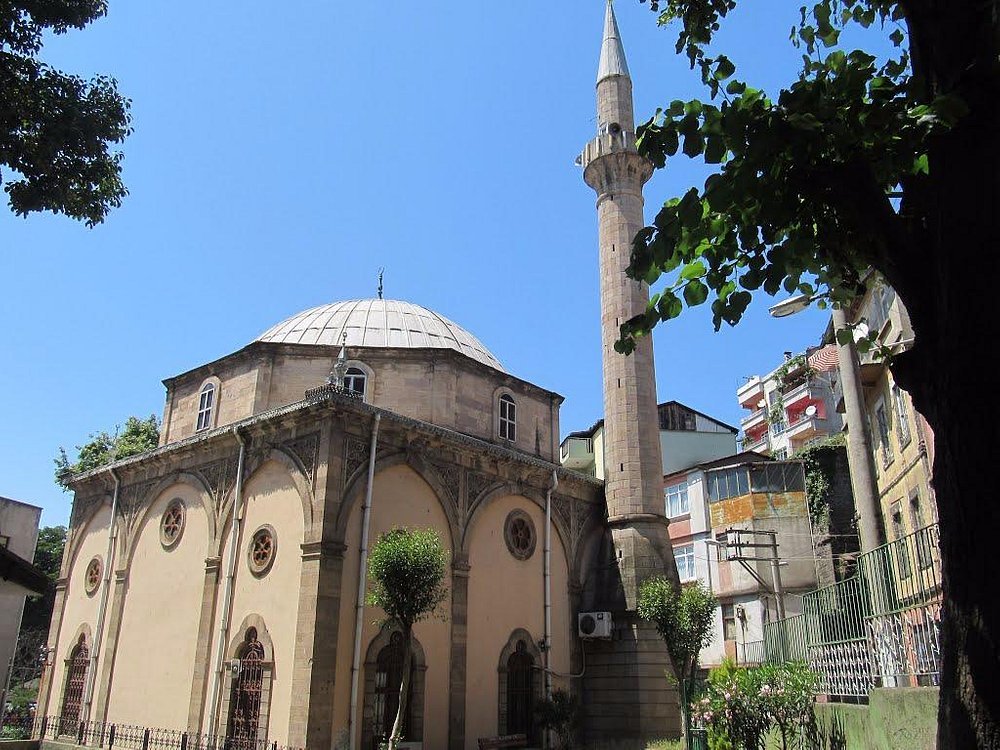
Kapu Mosque (also known as Seyyit Mehmet Pasha Mosque) is located in the center of Giresun, as an integral part of the historical fabric in Kale District. It is believed to have been originally built of wood in 1607–1608 by Seyyit Mehmet Pasha, though its current structure was demolished and rebuilt in 1896 by Karamustafaoğlu Mahmut Efendi. On February 14, 1986, it was granted the status of “Cultural Property to be Protected” under decision no. 1917, thus being placed under official preservation.
Architecturally, Kapu Mosque is a square-planned structure with a single central dome and is one of the Anatolian examples of Ottoman Baroque style. Finely cut and dressed stones were used in its construction, and the façades feature three niches on each side with pilasters and stonework decorated with vegetal motifs. The entrance is located on the northern façade and features a crown gate with twin columns in a decorative design. Inside, the mihrab stands out with its carved stone and plaster relief ornamentation, while the minbar features simple wooden craftsmanship. The mosque’s minaret is situated at the northeastern corner, built of stone, with a single balcony, and the dome is placed on an octagonal drum.
5. Giresun Island – A small island on the Black Sea coast, known for its natural vegetation and legends.
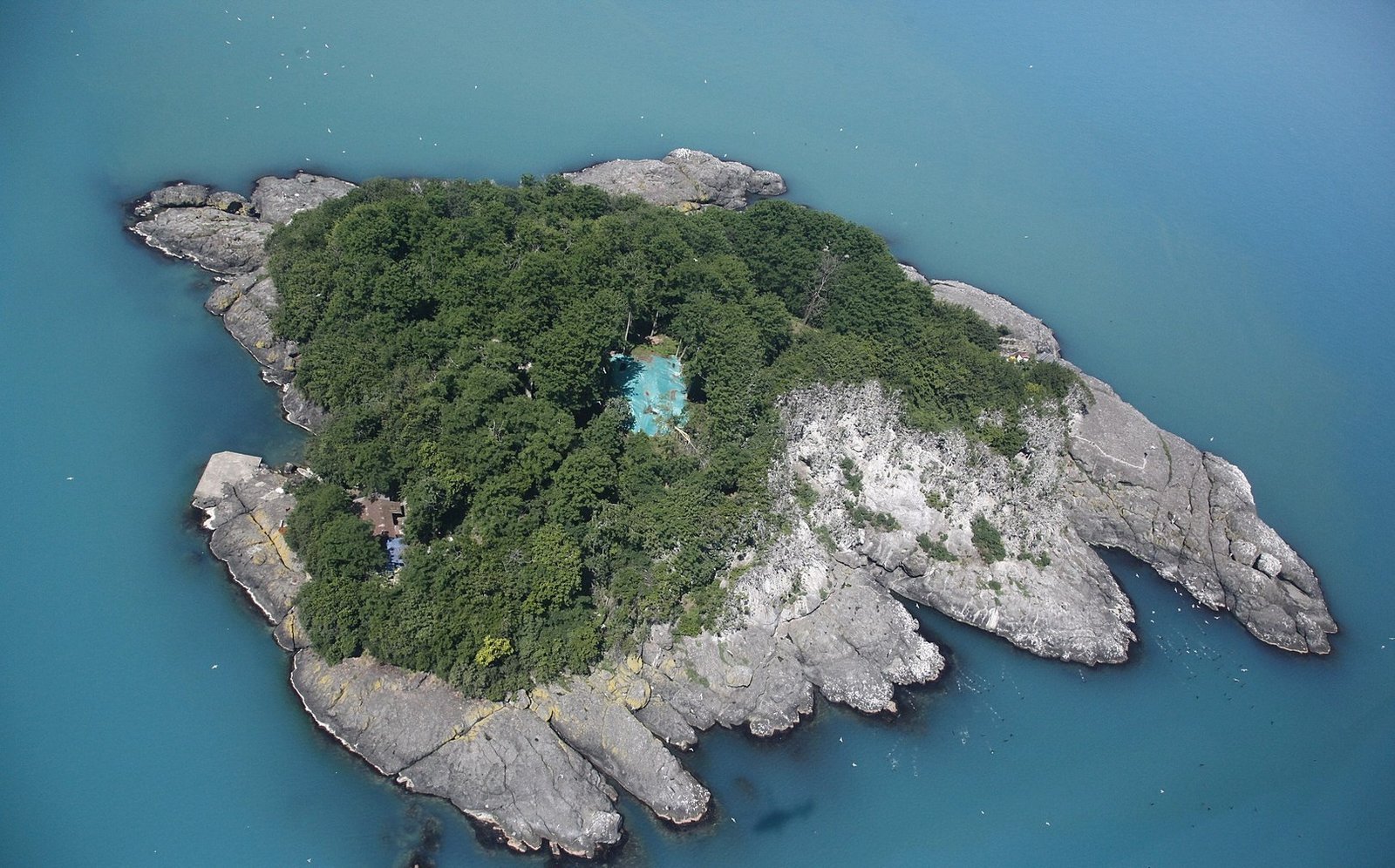
Giresun Island is a unique island located approximately 1.6 km off the coast of the Black Sea, near the center of Giresun, and spans an area of about 40,000 m² (4 hectares). Inhabited since ancient times, the island has been known by various names throughout history, such as Aretias, Areos Nesos, and Khalkeritis. Remnants from the Byzantine period, including walls, monastery ruins, chapels, tomb structures, and large pithos (jars), offer visitors a mysterious atmosphere. Giresun Island is particularly renowned for its legends—associated with a temple built by the Amazons for the god of war Ares, and considered a sacred stop for the Argonauts in the Golden Fleece myth.
The island also draws attention with its natural structure: it is home to 71 species of vegetation, including Mediterranean laurel and false acacia, with this number having increased over time through introduced species. The island is a breeding ground for bird species such as cormorants and seagulls, and serves as a resting place for migratory birds. It is protected as a 2nd-degree archaeological and natural site. Every May, during the “Aksu Festival,” a ritual is performed around the mystically significant “Hamza Stone” near the Aksu River, and boat tours around the island complete the visitors’ experience.
6. Kuzalan Waterfall and Nature Park – A natural wonder with travertine formations, ice-cold water, and hiking trails.
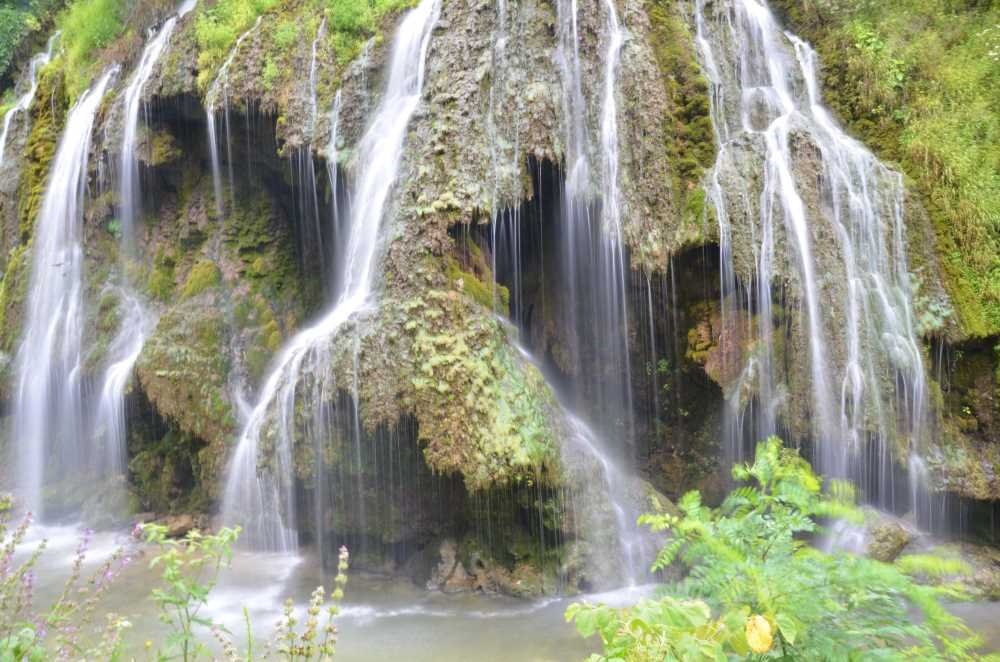
Kuzalan Waterfall and Nature Park is located in the Dereli district of Giresun and spans an area of approximately 4,820 decares rich in natural resources. Declared a nature park in 2013, the area is notable for its 1,800-meter-long travertine formations nestled within the forests of the Black Sea region. These formations rank among the largest forest-based travertine areas in the world, after Yellowstone in the USA. Also within the park, the Göksu Travertines feature small ponds reminiscent of Pamukkale, highlighted by naturally terraced structures formed from soda-rich mineral waters.
The waterfall itself cascades from a height of around 20 meters, offering an impressive view visible directly from the road. A viewing terrace set across from the falls allows visitors to enjoy the scenery. As emphasized in ecological studies, the park is home to iron- and sulfur-rich springs, tree species such as spruce, beech, fir, and boxwood, and historical mill ruins—making it an appealing destination for nature lovers, photography enthusiasts, and campers alike.
7. Mavi Lake (Soda Lake) – A cluster of small lakes, famous for scenic viewpoints and its peaceful nature.
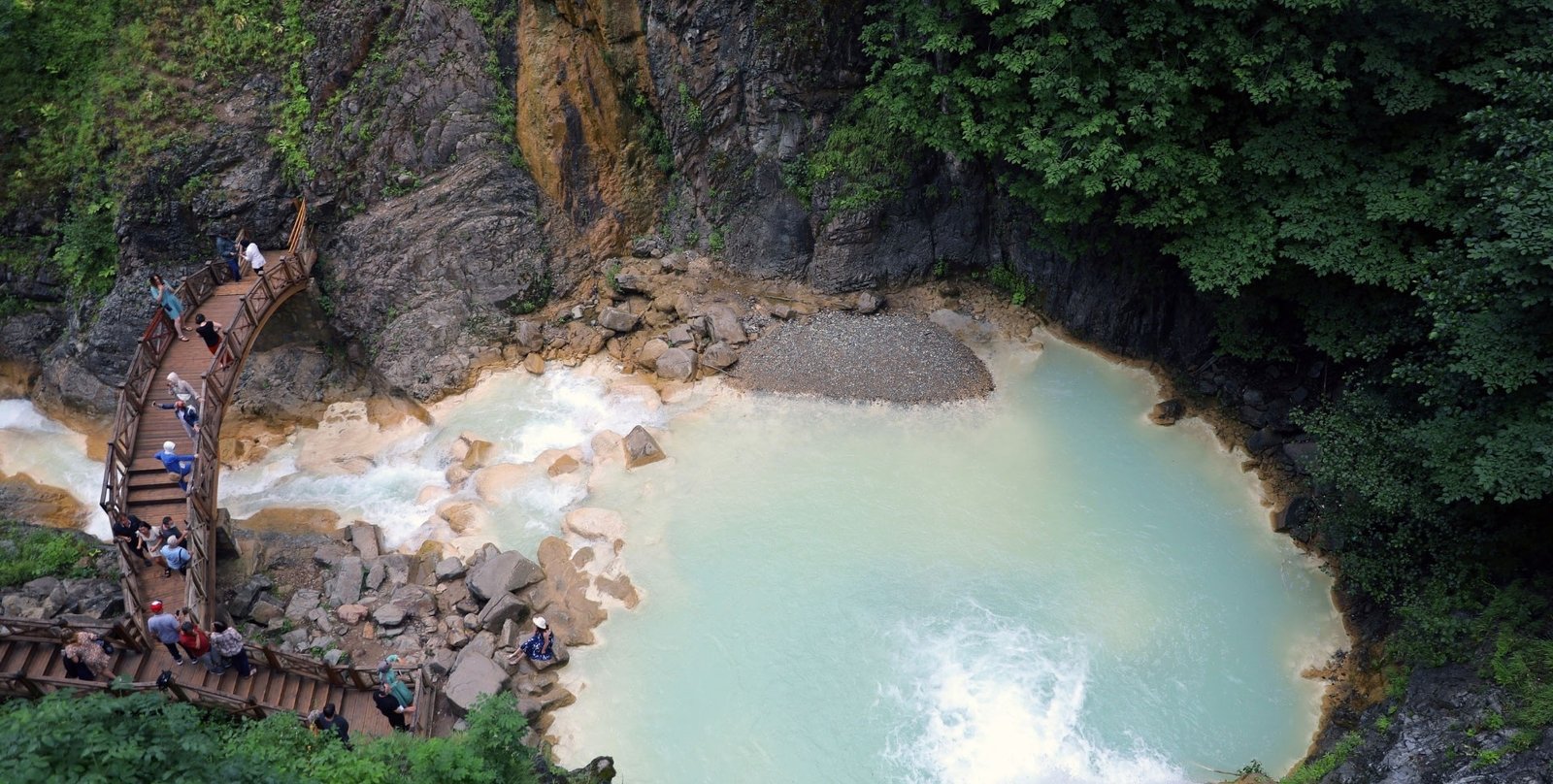
Mavi Lake, locally known as Soda Lake, is a natural wonder located within Kuzalan Nature Park in the Dereli district of Giresun. Formed by the merging of Aksu Stream and Göksu Creek, these lakes create bowl-shaped water basins, with the largest one, Mavi Lake, being the only soda lake in the Black Sea region (Göksu Creek is the soda water source). The lake’s turquoise water takes on a vivid blue hue during the summer due to limestone and high mineral content; this striking color is most prominent between June and December.
Wooden platforms and viewing terraces have been built around the lake, allowing visitors to enjoy its color and texture. Accessible via a short 100-meter walking trail, this area is ideal for nature walks and photography enthusiasts. It also offers free entry and parking; however, swimming is prohibited for safety reasons. At times, the lake’s color may become cloudy due to unplanned streambed rehabilitation projects, so it’s recommended to check the weather and water conditions when planning your visit if you want to see its characteristic blue hue.
8. Kümbet Plateau – Located in Dereli district, a popular destination known for its high altitude and July festivals.
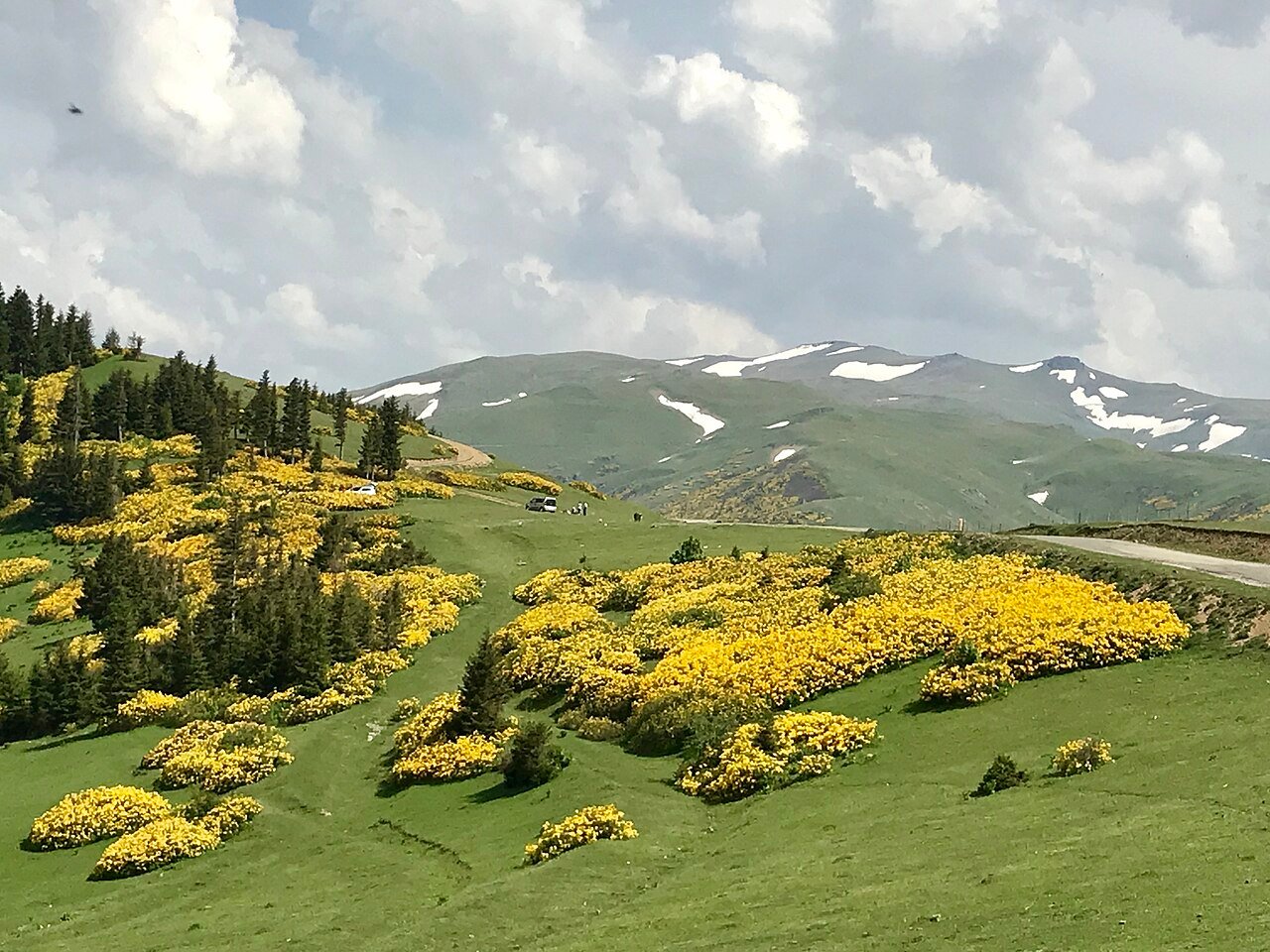
Kümbet Plateau is located in the Dereli district of Giresun and sits at an altitude of approximately 1,640 meters above sea level. Thanks to its high elevation, it attracts nature lovers with its cool climate, lush landscape, and natural scenery. The plateau is about 60 km from Giresun city center via paved roads and experiences seasonal activity, especially in summer, with its weekly market and surrounding highland settlements. While its winter population is around 500, this number rises to 30,000 in summer with the influx of residents and merchants, turning the area into a vibrant economic hub, particularly on Tuesdays when the market is held.
Every year in the second week of July, the International Kümbet Highland Festival is held in the Aymaç area. It offers a cultural feast with local folk dances, horon performances accompanied by the kemençe, handicraft stalls, and regional delicacies. Additionally, the plateau is suitable for trekking, camping, and nature photography, with resting and picnic spots such as Salon Meadow and Aymaç plain. Forest paths and rich vegetation—especially Black Sea-native oriental spruces, crocuses, and lilies—make this area an unforgettable natural destination.
9. Bektaş Plateau – A quiet, cool highland ideal for camping and picnicking.
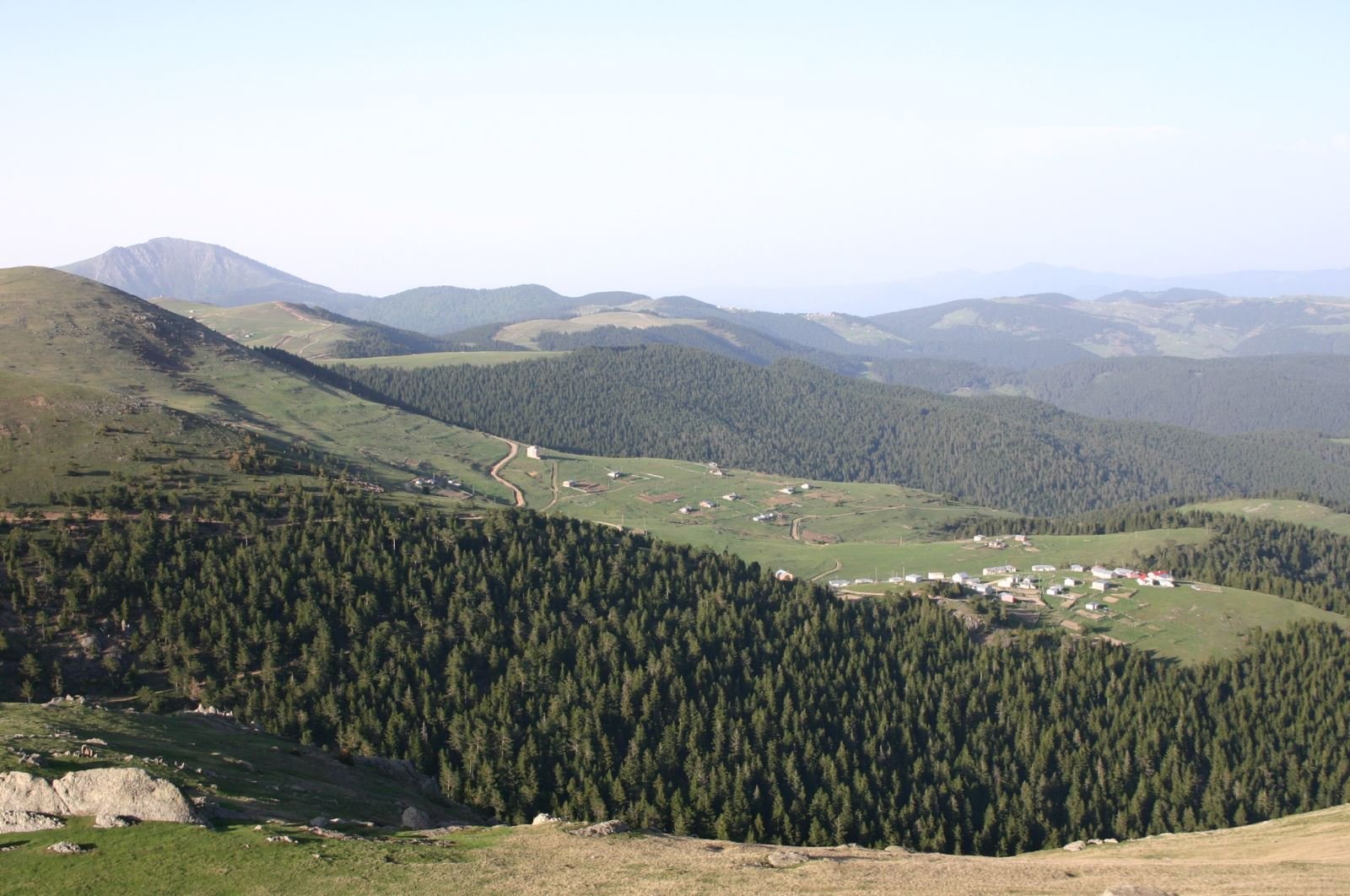
Bektaş Plateau is a highland in the Dereli district of Giresun, located approximately 56 km from the city center. Situated at an average altitude of 2,100 meters, the plateau stands out with its cool climate, misty atmosphere, and natural environment. Even in summer, the air feels cold enough to require heating, and Bektaş transforms into a vibrant social and cultural venue during the traditional Bektaş Highland Festivals held between late July and early August. These festivals offer visitors a rich experience with local people’s organic product stalls, horon dances, and regional dishes.
For those seeking to connect with nature, Bektaş Plateau offers camping and picnic areas. It has basic infrastructure such as electricity, water, and phone service, and in some parts, there are hotels and facilities with up to 80 beds. Pine forests, thick layers of fog, and cloud-covered slopes create an ideal atmosphere for hiking and photography. Additionally, the observation terraces around the plateau provide panoramic views that offer peaceful moments to visitors.
10. Sis Mountain Plateau – Offers a spiritual atmosphere with its ever-present mist.
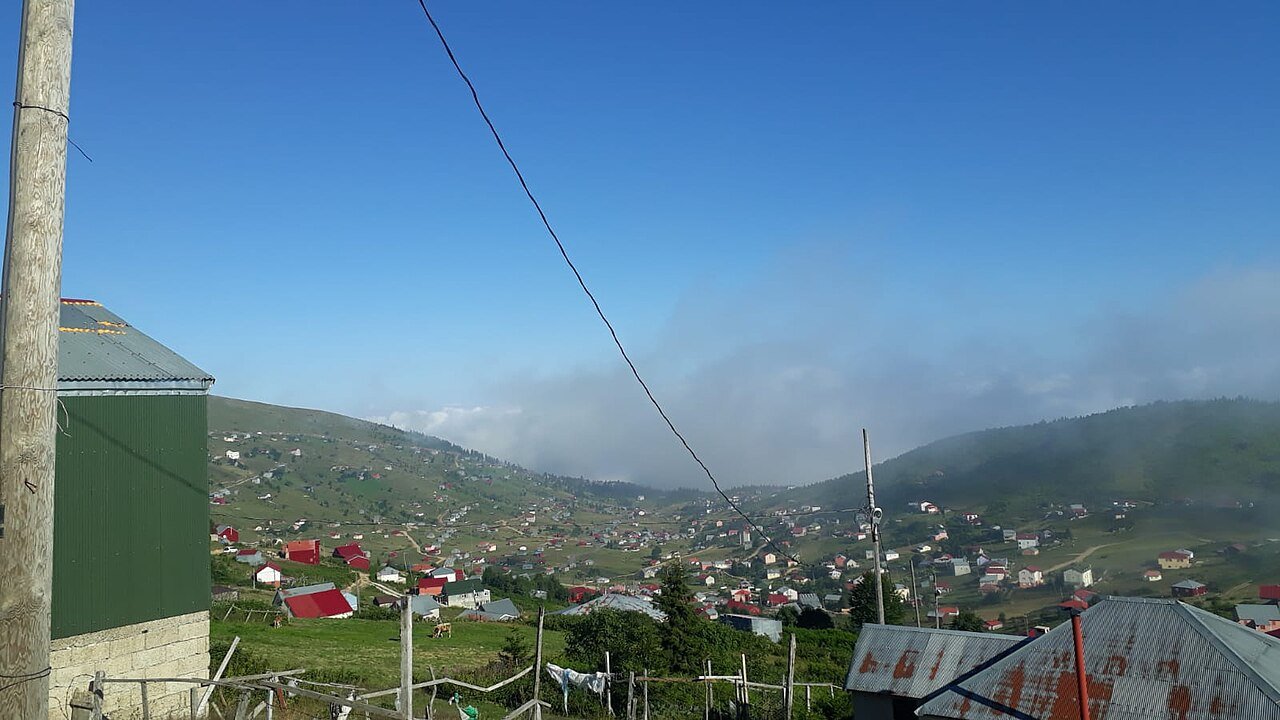
Sis Mountain Plateau is a dazzling highland located on the border of Giresun’s Görele district and Trabzon’s Şalpazarı district, at an altitude of approximately 2,182 meters above sea level. It is named “Sis Mountain” due to the dense fog clouds that constantly form around its summit. This misty atmosphere gives the plateau a mystical and spiritual ambiance, offering visitors a captivating natural experience.
Every year on the third or fourth Saturday of July, the Sis Mountain Highland Festival is held, celebrating local culture through regional folk dances, horon performances accompanied by the kemençe, traditional clothing, and cultural activities. The plateau is equipped with ideal infrastructure for hiking, camping, photography, and ATV activities, and provides services ranging from day visits to overnight stays, with access to electricity, water, phone service, and facilities.
11. Gölyanı Plateau – Dominated by every shade of green, one of the Black Sea’s hidden beauties.
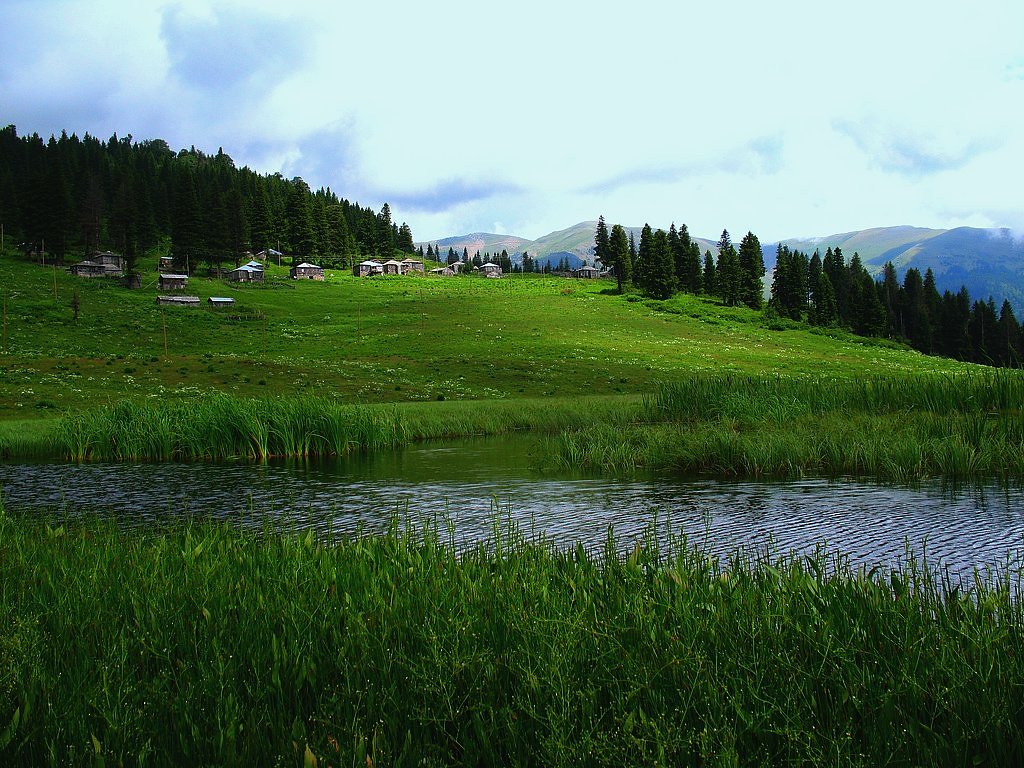
Gölyanı Plateau (also known as Gölyanı Obası) is located within the borders of Sınır Village in the Yağlıdere district of Giresun and is approximately 51 km from the district center. Situated at an altitude of about 1,530 meters, the plateau lies in a natural bowl-shaped terrain surrounded by pine forests. It stands out with its small lake in the center, wooden highland houses, and lush landscape. Recognized as one of the hidden beauties of the Eastern Black Sea, Gölyanı is protected under the status of “strictly protected sensitive area,” and concrete construction is not permitted.
This plateau is an ideal destination for those seeking tranquility, greenery, and natural surroundings. The lake and its surrounding open meadows offer a peaceful atmosphere, while the traditional wooden houses known locally as “hartama” give the area an authentic character. Especially in the summer, the grassy areas near the lake are well-suited for picnics, nature walks, and photography.
Efforts are made to maintain the lake’s water level; in 2022, development projects were implemented, including water line and road improvements. As a result, visitor numbers increased while the natural balance of the plateau was preserved. Gölyanı Plateau offers an unforgettable, nature-filled experience for both locals and travelers exploring the Black Sea region.
12. Kulakkaya Plateau – Known for nature walks, camping, and festivals.
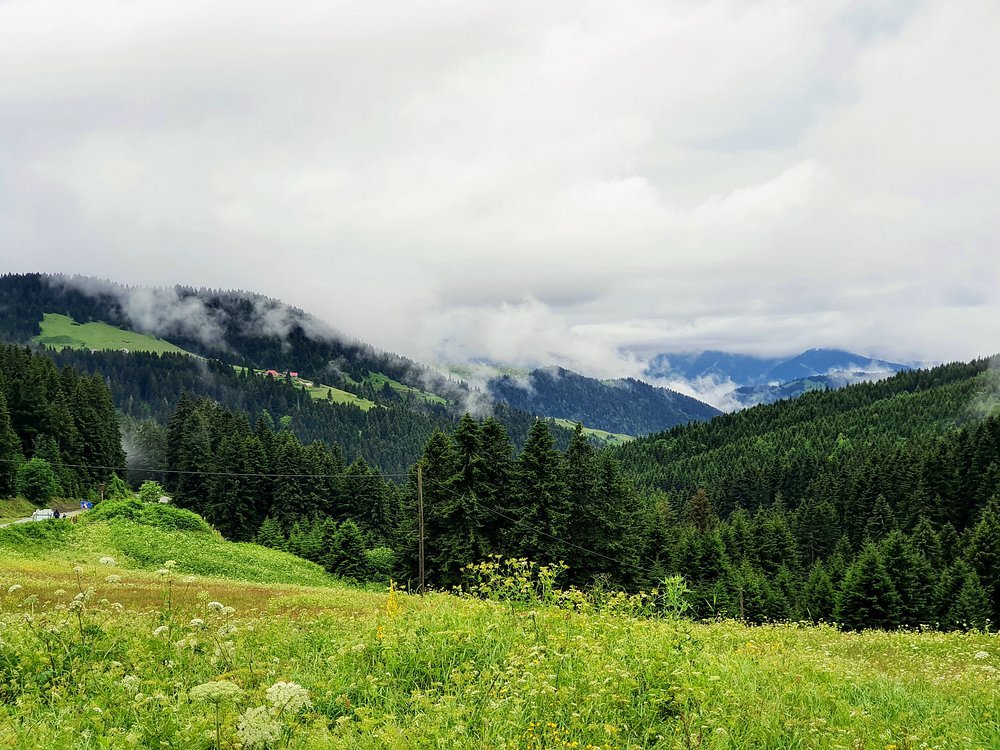
Külakkaya Plateau (also spelled Kulakkaya Plateau) is located in the town of Yavuzkemal in Giresun’s Dereli district. Situated at an altitude of approximately 1,700 meters above sea level, the plateau is about 45–50 km from the city center and is easily accessible by private vehicle via paved roads (approximately 50 km). With its open landscape, green valleys surrounded by pine and spruce forests, and flower-filled meadows, it is an ideal route for nature walks and photography enthusiasts. The blooming zifin flowers in spring, in particular, offer a visual feast.
The plateau also features suitable areas for camping and picnicking. Visitors can stay in tents or mountain cottages and enjoy a nature-immersed experience; electricity and water infrastructure can generally be accessed from the town of Yavuzkemal. Additionally, the plateau occasionally serves as a venue for events organized by the local community. Traditional and modern elements come together at festivals such as the Ağaçbaşı-Kulakkaya Highland Culture and Art Festival (in July) and the Winter Festival (featuring off-road and sledding activities during the snowy season).
13. Karagöl Mountains & Karagöl Plateau – A favorite spot for photographers and nature lovers.
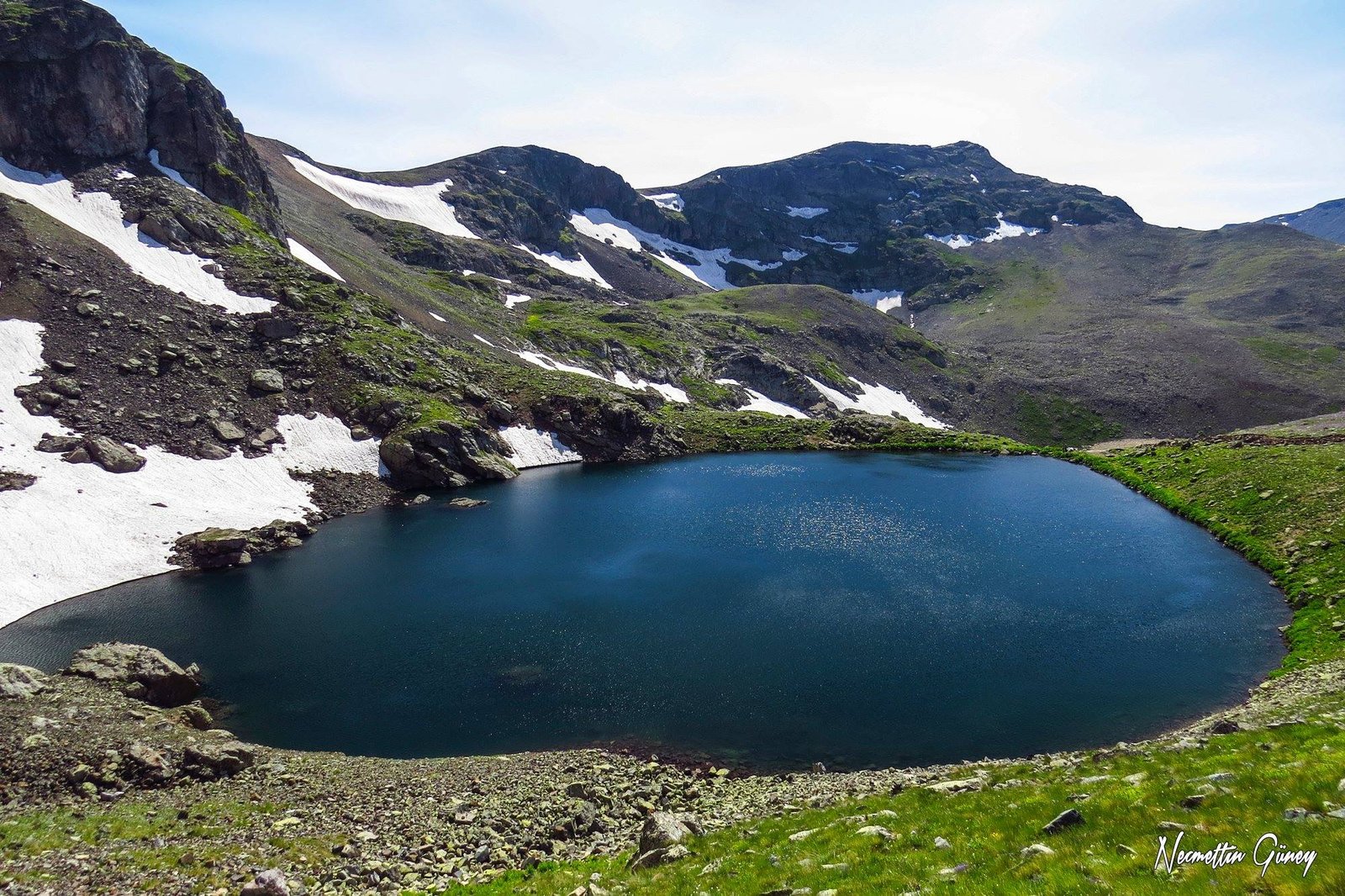
The Karagöl Mountains and Karagöl Plateau are located in the southwest of Giresun’s Dereli district, at the junction of the Giresun, Ordu, and Sivas provincial borders. With peaks reaching elevations between 2,500 and 3,107 meters, along with cirque (glacial) lakes and waters, the mountains present a truly spectacular natural landscape. The main Karagöl near the summit, as well as surrounding glacial lakes such as Aygır Lake, Camlı Lake, Bağırsak Lake, and Sağrak Lake, captivate visitors with their massive and crystal-clear waters.
This region offers a fantastic setting for trekking, camping, hiking, and outdoor sports, especially in the summer. Nature sports festivals, bicycle tours, and mountain runs organized by clubs such as GİDOSK bring lively activity to the area; technical trails and nighttime photography are also popular. The Sağrak Lake Highland Festival and the Aksu Village Karagöl Keşkek Festival held in July blend local culture with nature, providing visitors with unforgettable experiences.
The Karagöl Mountains and Karagöl Plateau are a discovery route where photographers chase glistening waters and wide vistas, while nature lovers find themselves immersed in the heart of the wilderness. It offers a unique alternative for those seeking a natural geography beyond expectations.
14. Virgin Mary Monastery (in Şebinkarahisar) – A four-story historical structure carved into rock, open to visitors after restoration.
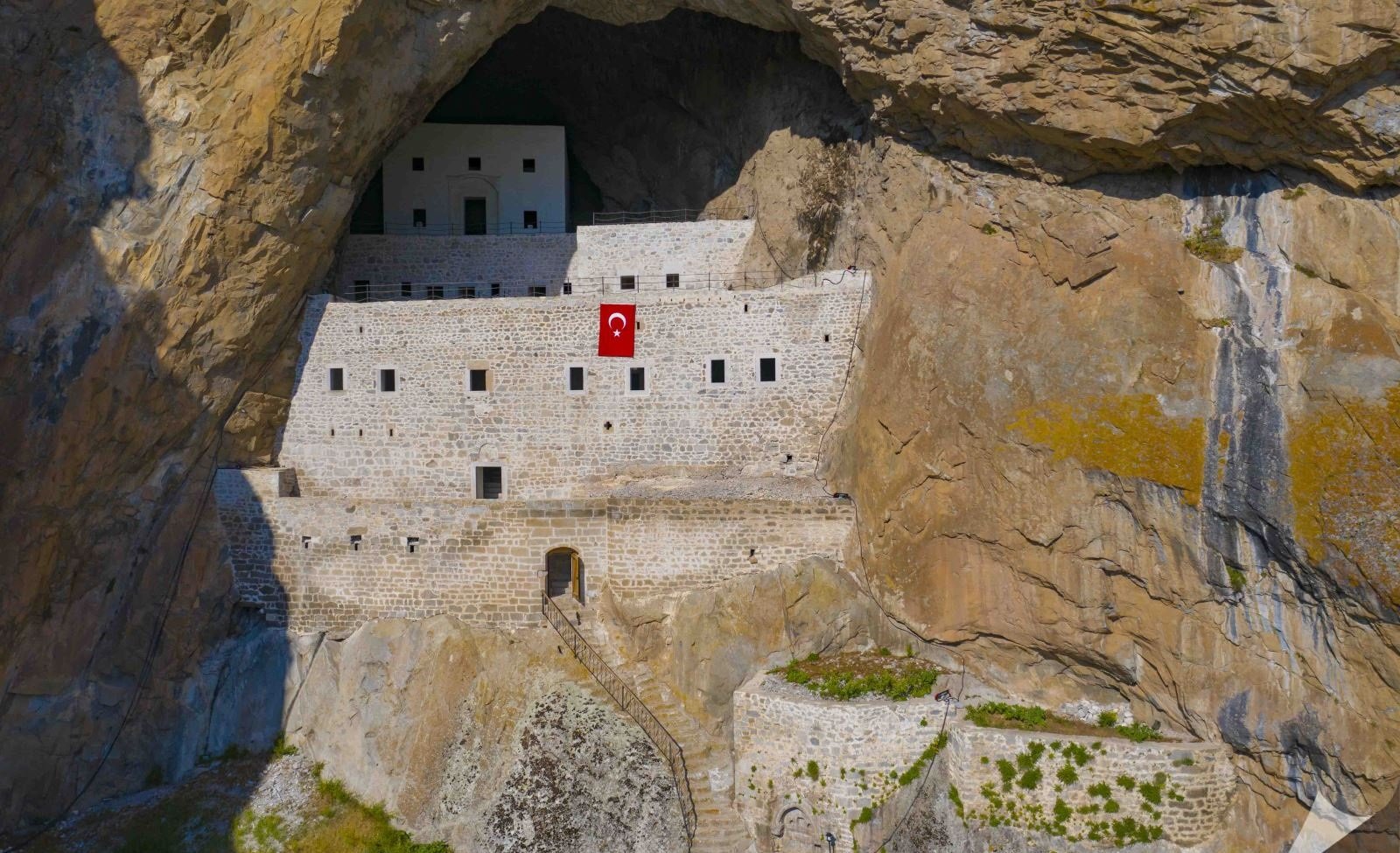
The Virgin Mary Monastery is an impressive religious structure carved into a steep rock face, located within the borders of Kayadibi Village in the Şebinkarahisar district of Giresun. Believed to have been founded during the Byzantine period in the Middle Ages, particularly between the years 481–490, the monastery is built within a single massive rock and is one of the largest rock-carved monasteries in Turkey. Access to the monastery is via a path leading to a natural cave within the rocky cliffs, followed by a staircase with approximately 26 steps. The structure has four stories in total; the first three floors consist of service areas (dining hall, common room, classroom, dormitory, etc.) and 32 rooms, while the fourth floor at the top is designed as a church. This upper floor, featuring wall frescoes and decorations, is a significant site in terms of spiritual and cultural religious tourism.
Undergoing comprehensive restoration in 2013–2014 by the Giresun Governorship and the Ministry of Culture and Tourism, the monastery was declared a historical site in 2014 and opened to visitors, gaining the status of a first-degree archaeological site. It offers free and guided tours to visitors and has seen growing interest, particularly in terms of cultural and faith tourism. The visit of Ecumenical Patriarch Bartholomew, who held a religious ceremony within the monastery, further emphasized its importance. The panoramic view from the site over the surrounding valleys provides visitors with an experience that blends historical depth with natural beauty.
15. Şebinkarahisar Castle – Remnants from the Roman period, offering an impressive hilltop view.
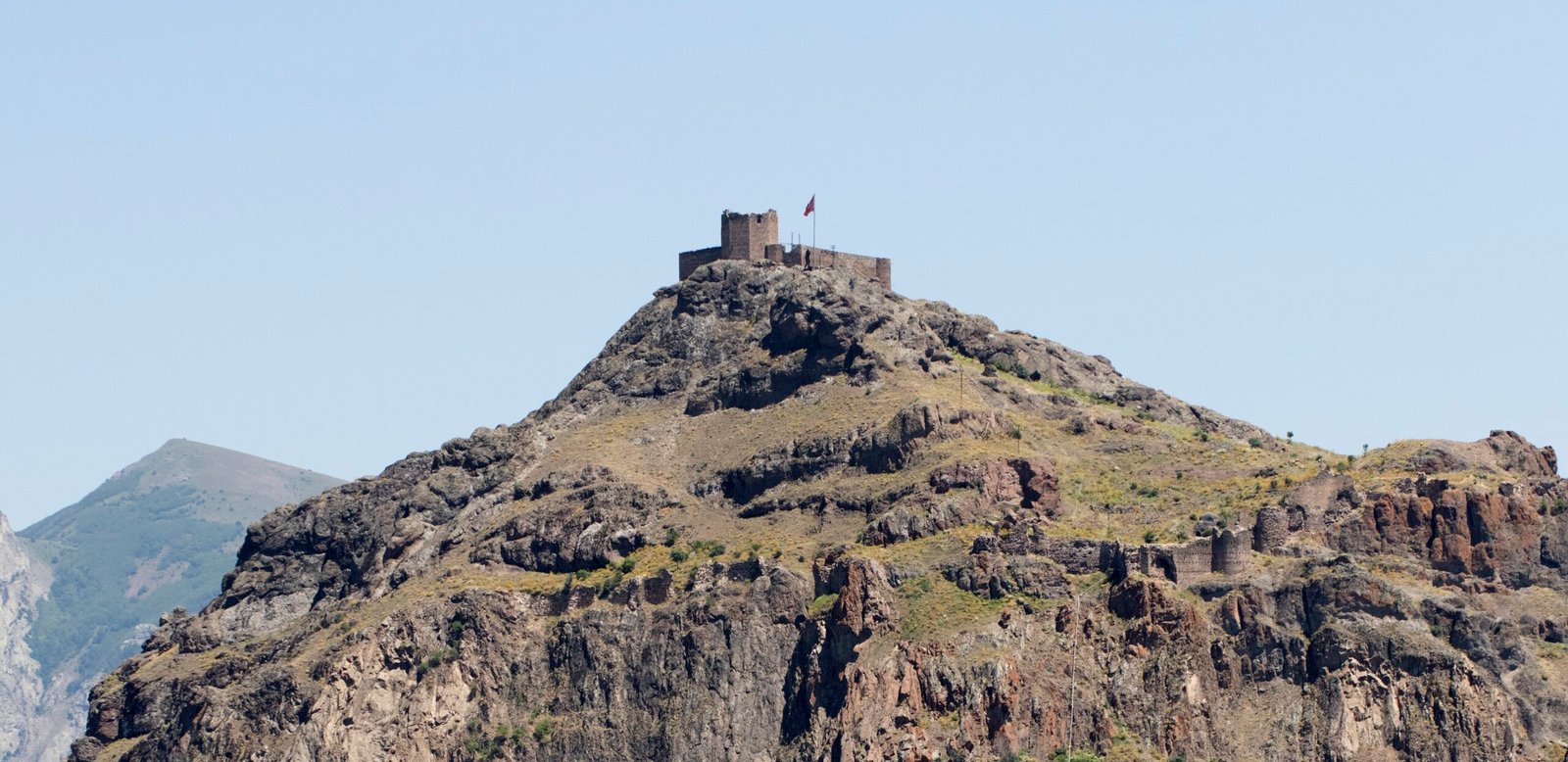
Şebinkarahisar Castle is located on a hill called Hacı Kayası in the Şebinkarahisar district of Giresun Province. Thought to date back to a time much earlier than the Roman period, the castle held strategic importance under the rule of the Persians, the Kingdom of Pontus, and the Roman Empire. Most of the current walls were added during the Seljuk (Mengücek) period—specifically in 1184 by Fahreddin Behramshah—and restored during the Ottoman era. The pointed-arched “Seljuk Gate” at the entrance and the two semi-circular towers flanking it reflect the original architecture.
The castle consists of two main sections: an outer and an inner fortress. The outer fortress features a staircase-carved rock entrance and large oval-shaped towers known as “Kızlar Kalesi” (Maiden’s Castle). In the inner fortress, notable structures include a four-story octagonal tower, a rectangular courtyard, and a rock-carved cistern called “Kırk Badal.” According to the travel book of Evliya Çelebi, the castle once contained 70 houses, multiple cisterns, wheat granaries, and a mosque; however, most of these structures were destroyed following the events of 1915. Today, the castle offers visitors an unforgettable experience through its impressive views and historical remnants, both historically and geographically.
16. Tirebolu Castle – One of the old fortress structures overlooking the coastline.
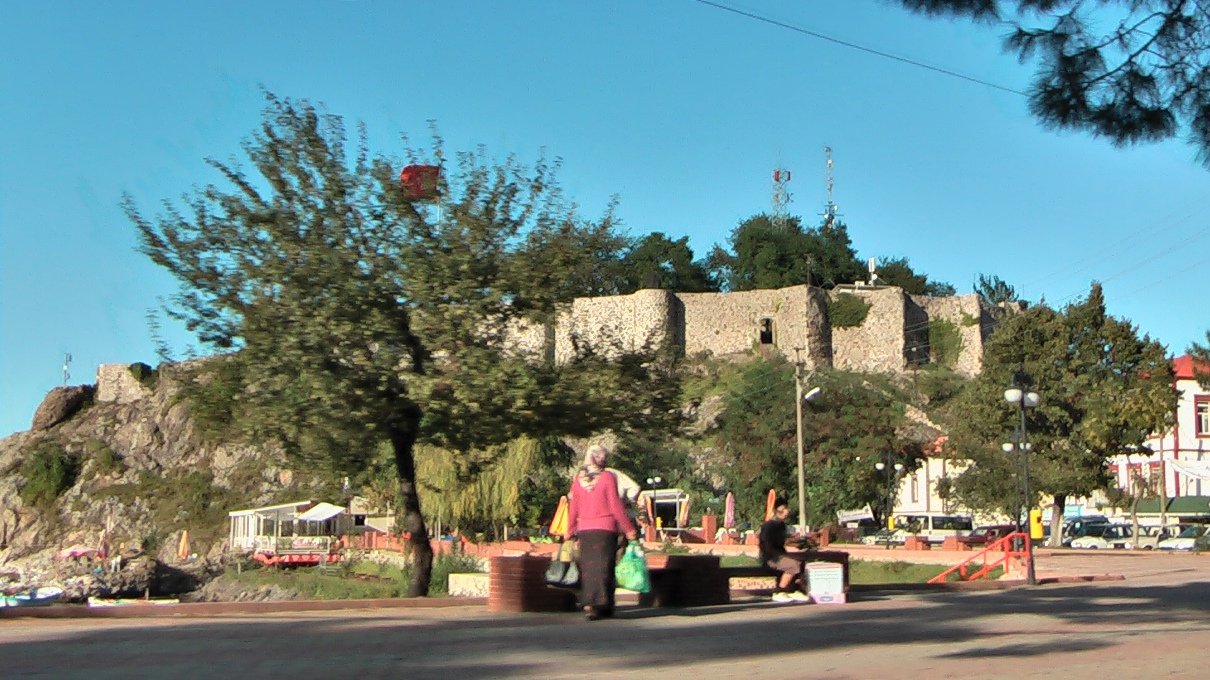
Tirebolu Castle (also known as Saint Jean Castle) is a historic structure rising on a peninsula in the center of Tirebolu district in Giresun. Although the exact date of construction is unknown, it is believed to date back to the Hellenistic or Roman period. It was renovated during the Kingdom of Pontus, acquiring the characteristics of a medieval castle. The structure was built using rubble stones made of basalt from the local Harşit River and limestone from the Ünye region; its outer walls are supported by regularly spaced buttresses. Access to the castle is via a steep staircase of about 120 steps from the south, leading to a low-arched gate.
Inside the castle are the remains of the Virgin Mary Church chapel, a small mosque, and gravestones from the Ottoman period. These gravestones were brought from the yard of a former school and placed in the castle. Thanks to restorations, the castle’s walls have been largely preserved, making it a location that offers visitors an impressive experience both historically and geographically. Today, it is easily accessible on foot from the town center and is an ideal stop for those who wish to experience the historic atmosphere accompanied by views of the Black Sea.
17. Bedrama (Espiye) Castle (Andoz Castle) – Historical castle ruins with panoramic views.
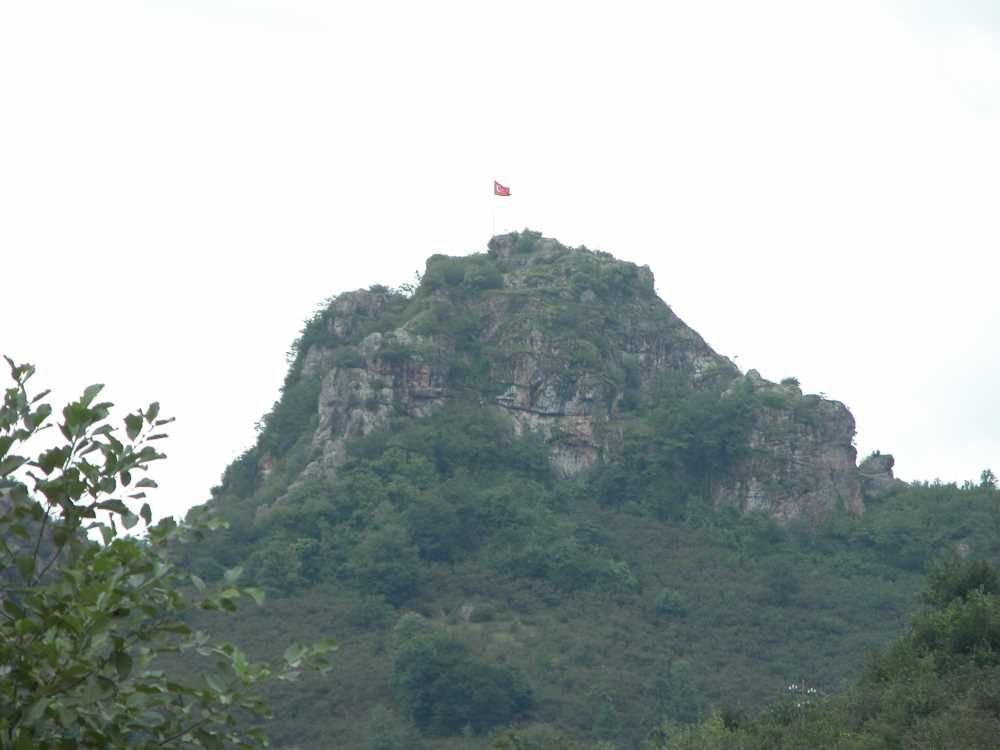
Bedrama (Espiye / Andoz) Castle is a historic watchtower structure built on a pointed hill dominating the Yağlıdere Valley in the Espiye district of Giresun. The castle is situated atop a rock approximately 250–300 meters high and was intended to control both the Black Sea coastline and the interior of the valley. Although it is considered a structure from the medieval period, its exact construction date is not documented; however, experts suggest that it may date back as far as 1300 BC. Surrounded by walls, the entrance is located on the northern side and is protected by two semi-circular towers; on the eastern end, there are remains of a rectangular, vaulted structure.
Welcoming visitors with its striking panoramic views, Bedrama Castle has become a popular spot for photography enthusiasts due to its scenery overlooking the Harşit Valley and the Black Sea. Following restoration work, the castle is now open to visitors, and reaching the summit requires a short trail walk. Along with the breathtaking views, the historical atmosphere felt among the ruins makes the site attractive for both nature and cultural tourism.
18. Gelin Kayası (Bride’s Rock) – A natural rock formation steeped in legend.
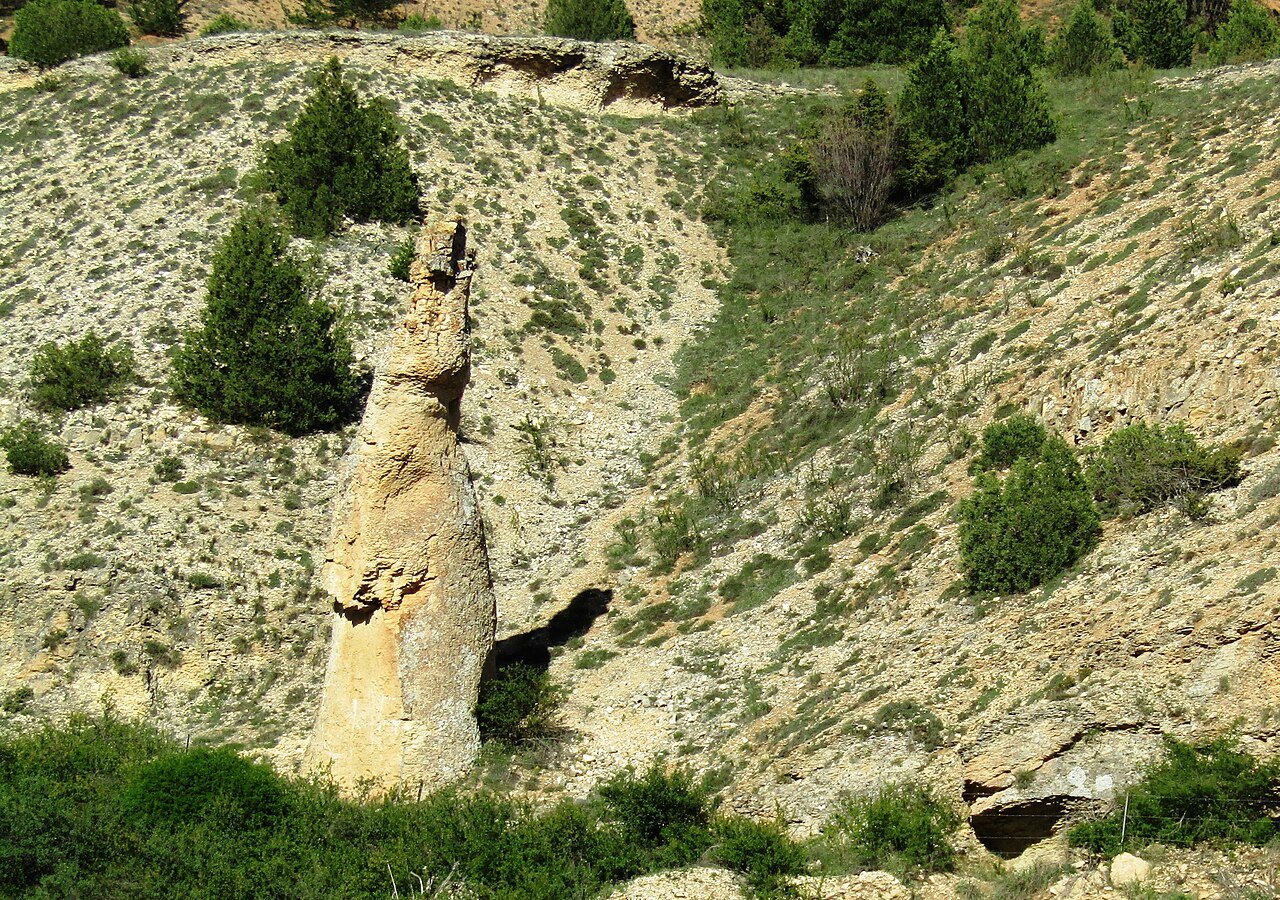
Bride’s Rock (Gelin Kayası) is a natural wonder rock formation located in the Taşhan area of Mesudiye Village in Giresun’s central district. Two massive stone blocks standing side by side on a steep slope attract attention with their seemingly unbalanced stance that defies the laws of physics. This silhouette is popularly known as “Bride’s Rock” because it resembles a human figure from many angles. The upper section of the rocks, standing between them, appears as though depicting a bride with a long veil draped over her waist.
According to legend, a beautiful young girl who was being forced to marry someone she didn’t love prayed to God while riding on horseback in her wedding procession: “Dear God, don’t let me fall into the hands of a bad husband—turn me into stone.” Her prayer was answered, and she turned into stone along with her horse. As a symbol of this tale, shapes resembling both a bride and a horse are interpreted on Bride’s Rock. Depending on the viewpoint, the rocks are also said to resemble the silhouette of Atatürk or a seated animal.
Although the site is not yet registered as a cultural asset, significant steps are being taken to develop it for tourism. Under the leadership of Giresun MP Ali Temür, the Bride’s Rock Tourism Destination Project aims to build panoramic viewing terraces, rest areas, a natural spring-fed fountain, local delicacy stands, and photography points. Once the project is complete, the area is expected to become a major attraction for both locals and nature and photography enthusiasts.
19. Yedi Değirmenler Nature Park – A recreation area with nature walking trails.
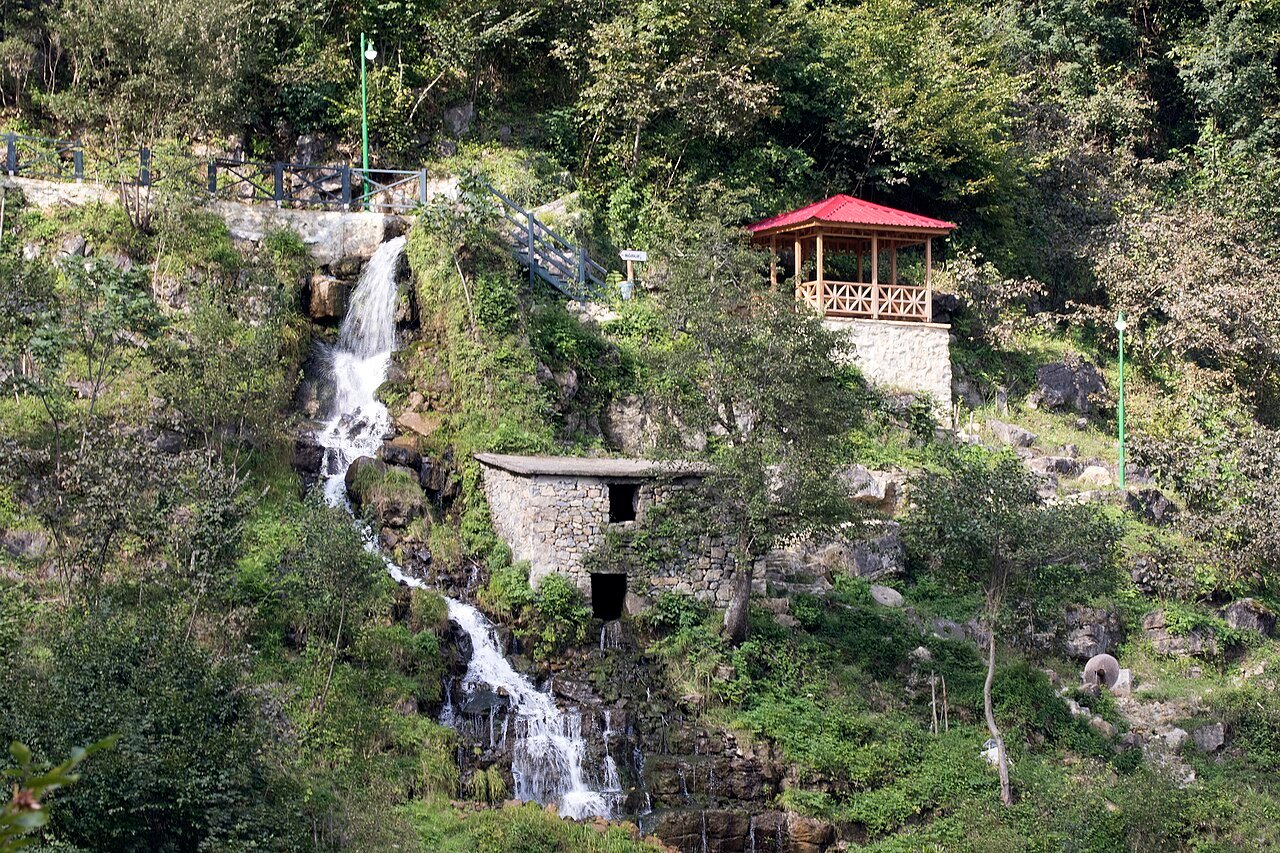
Yedi Değirmenler Nature Park is located within the borders of the villages of Yeniköy, Akkaya, and Avluca in the Espiye district of Giresun. It lies approximately 62 km from Giresun city center and 28 km from Espiye. Declared a nature park in 2013 due to its natural and cultural values, the area spans a forest ecosystem of about 103 hectares.
The park takes its name from the “seven mills,” a cultural heritage reflecting the historical use of spring water in grinding wheat. Today, six of the seven mills are still operational. In addition, the park features five waterfalls, two caves, sinkholes, monumental pear trees, and the ruins of a castle. The “Yedi Değirmenler Cave,” known for its karstic structure and internal spring water, is one of the site’s standout features.
The park is rich in activities such as hiking, camping, and ecotourism. Visitors can explore waterfalls, caves, and sinkholes along walking trails, and enjoy nature through gazebos, snack stands, and picnic tables placed along the route. A restaurant in the area also offers breakfast and local delicacies.
With its high potential for ecotourism, the region boasts a diverse structure ranging from stalactite-stalagmite formations and caves to cultural mills and rich forest flora and fauna. Yedi Değirmenler Nature Park is an ideal destination for activities such as cycling tours, nature photography, and cave exploration, offering an unforgettable experience for both local and international tourists.
20. Ağaçbaşı Nature Park / Aymaç Nature Park – Close to Kümbet, a highland walking, picnic, and festival area.
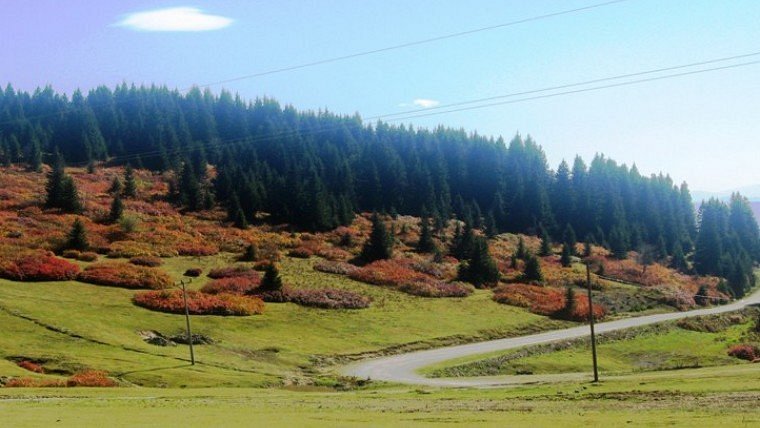
Ağaçbaşı / Aymaç Nature Park is located within the boundaries of Dereli district, approximately 5 km from Kümbet Plateau, and stands out as a site of both natural and cultural significance. Granted nature park status on September 22, 2017, Aymaç spans an area of about 42 hectares and draws attention with its unique vegetation and green meadows. Established in the Ağaçbaşı Plateau region, the park reaches elevations of up to 1,760 meters and hosts rich biodiversity with Eastern Black Sea fir and spruce forests.
The park offers ideal infrastructure for highland hiking, camping, and picnicking. Forest clearings surrounded by open meadows, viewing terraces, gazebos, picnic tables, and snack kiosks make it suitable for day-long recreational activities. Additionally, the annual Ağaçbaşı / Aymaç Highland Festivals provide a festive atmosphere with traditional folk dances, cultural activities accompanied by the kemençe, and stalls selling local products.
Combining its natural landscape with the festive spirit of Kümbet, this park promises a special experience for nature lovers and is a must-visit destination to include in any trip to Giresun.
